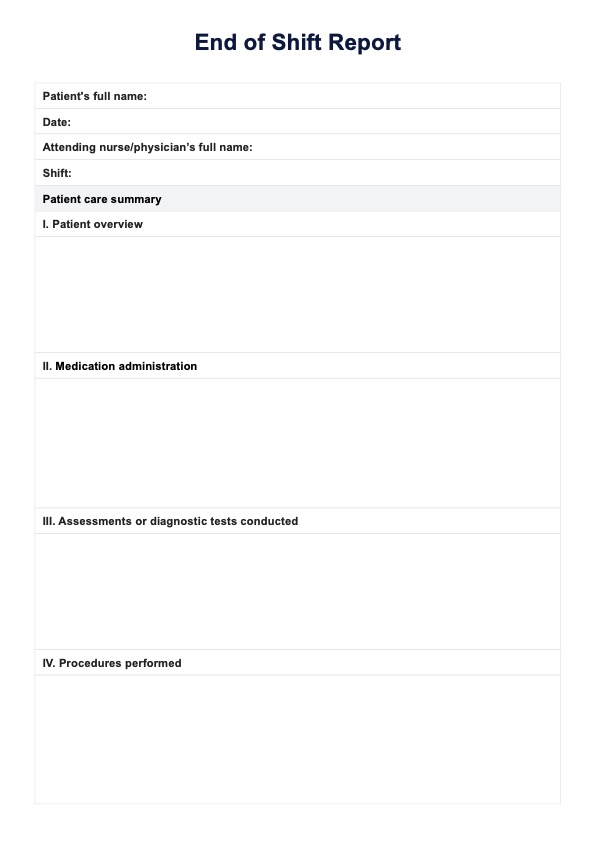The primary goal of the end-of-shift report is to facilitate seamless communication and information transfer between healthcare practitioners during shift changes. It ensures that vital patient care details are effectively communicated, promoting continuity of care and patient safety.

End-of-Shift Report
Optimize healthcare efficiency with our End-of-Shift Report, ensuring comprehensive updates for seamless patient care transitions.
End-of-Shift Report Template
Commonly asked questions
The report serves as a comprehensive summary of the shift's events, allowing healthcare practitioners to share critical patient information, document procedures, and address challenges collaboratively. It enhances team communication, minimizes errors, and supports continuous improvement in healthcare delivery.
Yes, the End-of-Shift Report Template is designed to be adaptable to different healthcare settings and practitioner preferences. Practitioners can customize the template to align with specific documentation needs, ensuring relevance to their unique workflow.
EHR and practice management software
Get started for free
*No credit card required
Free
$0/usd
Unlimited clients
Telehealth
1GB of storage
Client portal text
Automated billing and online payments











